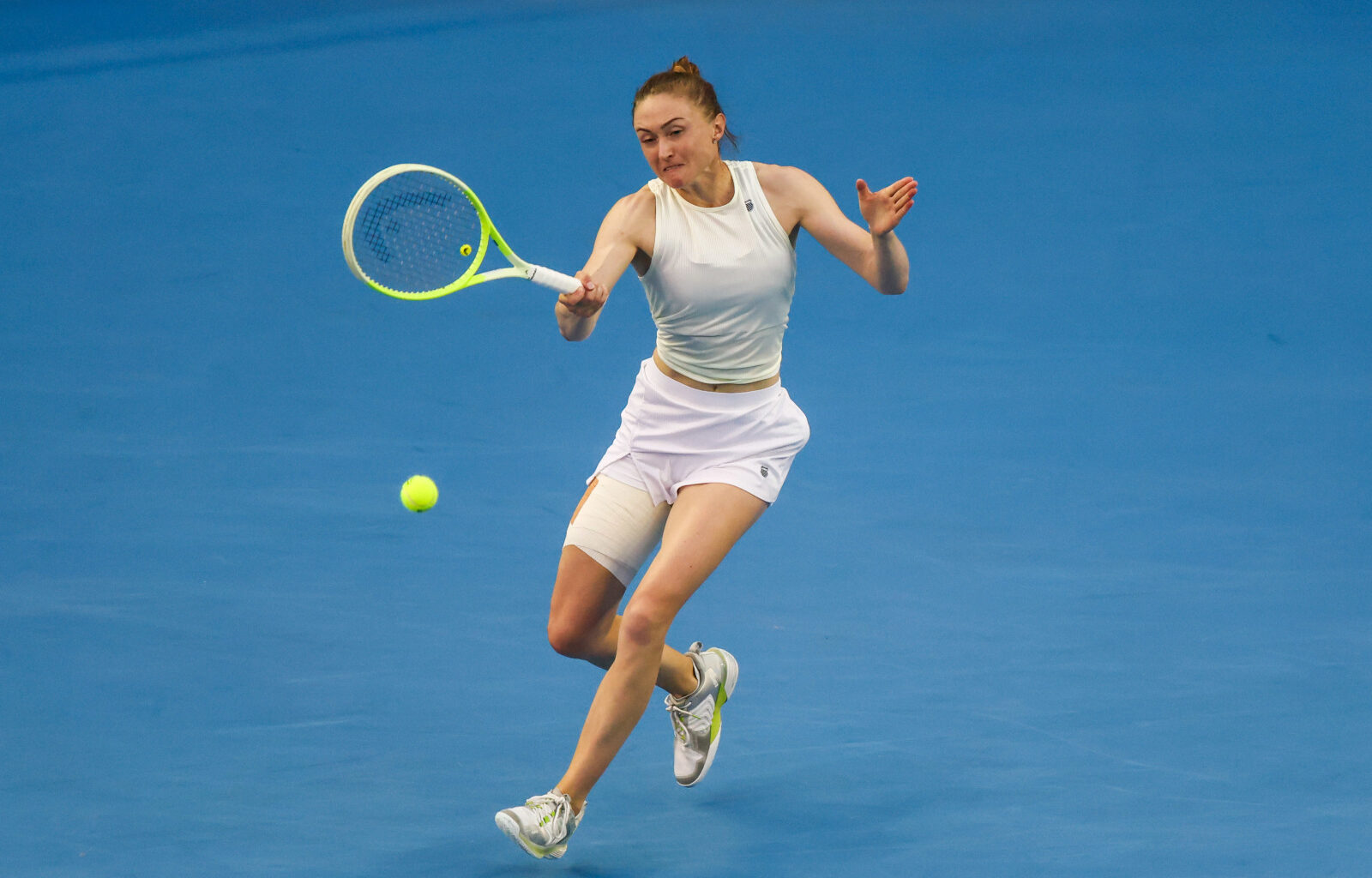Qualifier Aliaksandra Sasnovich pulled off one of the China Open’s biggest upsets so far, coming from a set and a break down to defeat No. 12 seed and 2019 champion Naomi Osaka 1-6, 6-4, 6-2 in 1 hour and 56 minutes.
Beijing: Scores | Draws | Order of play
The numbers all pointed towards Osaka coming into the match. She had not lost a completed match in Beijing since 2018 — last year, she was forced to retire in the fourth round at a set all against Coco Gauff. She has been resurgent in recent months, rocketing back into the Top 20 after reaching the Montreal final and US Open semifinals.
Osaka has enjoyed success against Sasnovich in the past, having won all four of their previous meetings — including a 6-0, 6-0 whitewash en route to her first major crown at the 2018 US Open. And while Sasnovich, 31, is a five-time WTA finalist who reached a career high of No. 29 in 2022, she has posted just five tour-level wins this year and her ranking has tumbled to No. 130.
“Honestly I didn’t believe til the end that I can beat Naomi, because she’s a great player,” Sasnovich said in her on-court interview.
Sasnovich’s victory over Osaka is her 24th career Top 20 win, but her first in 16 months — since defeating Ekaterina Alexandrova at Rome 2024.
How did Sasnovich turn the match — and the rivalry — around?
For a set-and-a-half, the reasons for Osaka’s dominance over Sasnovich became apparent. The latter showed she could hang with Osaka from the baseline on occasion, but those occasions were all too rare. And there was a gulf in quality between their serves. Sasnovich landed just five first serves in the set, and only won four points behind her delivery in total. Osaka landed 72% of her first serves and won over 62% of her points on both deliveries.
Osaka was under pressure in only one game, as she served for the first set at 5-1. She responded superbly, playing her best two points of the match to save both break points against her and then a pair of service winners to help her over the line.
Down 3-2 in the second set, Sasnovich’s break back came out of nowhere — an angled backhand winner for an unlikely position. But the momentum switch was immediate. At 4-4, Sasnovich made a pair of winning forays to the net for the first time, and then sealed the set on return as Osaka’s backhand began to break down.
Reeling off winners and coming through a series of riveting, high-octane battles in the decider, Sasnovich won 10 of the last 13 games — having lost nine of the first 11. Even a momentary lapse into error when serving for the match couldn’t put her off her stride, and she coolly executed a fine drop shot and a precise backhand winner in the next game to close out the win.
Having managed only six winners in the first set, Sasnovich tallied 21 over the next two. By contrast, Osaka committed only eight unforced errors in the opener, but 33 in sets two and three combined. Meanwhile, Sasnovich improved both the accuracy and effectiveness of her serve, posting a 64% first serve percentage in the second and third sets.
With consecutive tour-level wins under her belt for the first time since reaching the Cluj-Napoca semifinals in February, Sasnovich will next face No. 23 seed Marta Kostyuk as she bids to reach the last 16 of a tournament at WTA 1000 level or above since Roland Garros 2022. Kostyuk delivered a masterful performance full of superb net play and remarkable athleticism to defeat qualifier Ella Seidel 6-1, 6-1.
